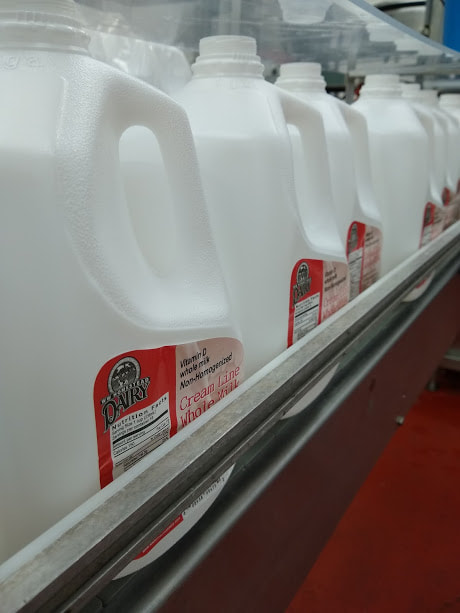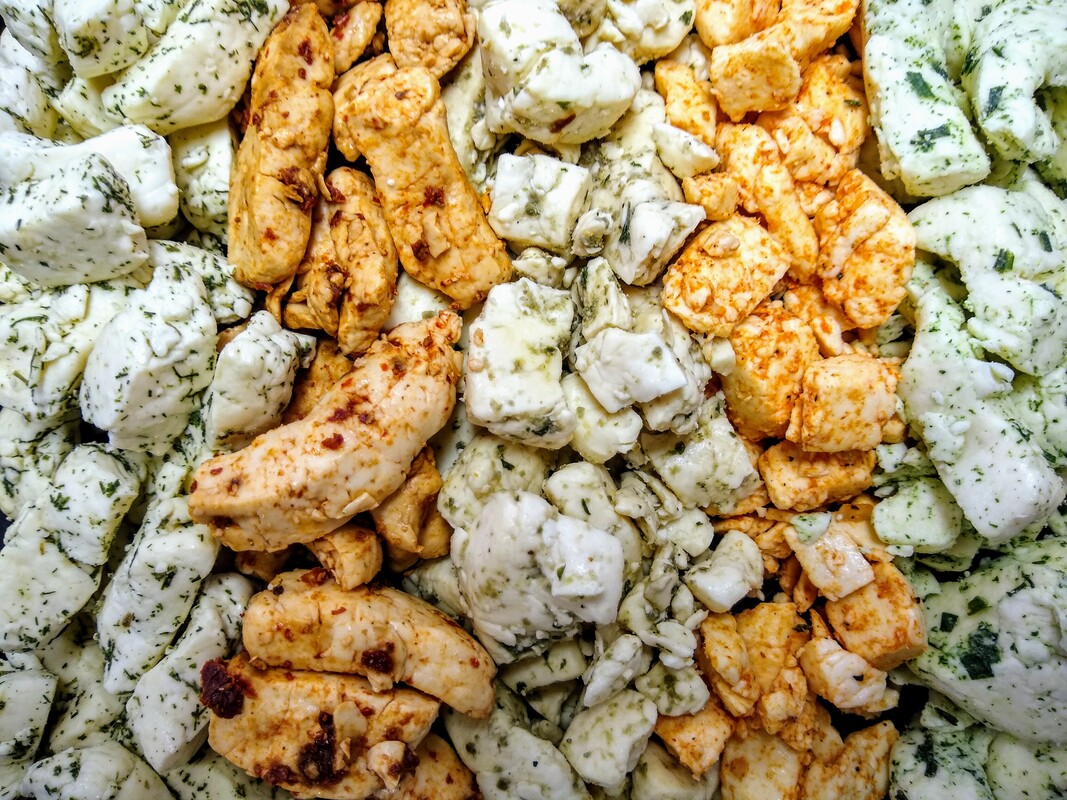|
You finally did it! Grabbed a gallon of WW Homestead Dairy milk at your local grocery store... only to get home, open it up, and ewww.... it's all globby and curdled on top! But wait! Then you remember this non-homogenized thing you've been hearing about. What's that again? Non-homogenized or cream-line milk, is milk in it's most natural state. Milk is made up of water, protein, fat, vitamins and minerals. When unprocessed milk sits undisturbed the large fat globules will begin to separate out and rise to the top of the glass. All you have to do is shake or stir it up and magically the cream redistributes throughout the milk and looks "normal" again. Most milk that is bottled up in our modern age is homogenized to make it more appealing and consistent for consumers. In order to homogenize milk it must go through a mechanical and completely unnecessary step. Milk is heated, agitated and then forced through a small screen at high pressure. This breaks up the large fat globules into smaller, more uniform pieces. These smaller fat globules no longer rise to the top, instead they stay in suspension throughout the liquid part of the milk. Sure, homogenization is just a mechanical process that does not change the nutrition or caloric content of milk, but there is anecdotal evidence that some people find natural, non-homogenized milk easier to digest. We have talked to folks who thought they were lactose intolerant, who find they can drink our milk with no issues (although there is no studies that prove this, so try at your own risk!). In it's natural form milk is sweeter, creamier and more flavorful than homogenized milk. The best way to know if you can taste a difference is to try it! So, if WW Homestead Dairy doesn't homogenize their milk is it still safe to drink!? Absolutely! Our milk is not homogenized, but it is still pasteurized. These are completely different processes. Pasteurization is used to kill any harmful bacteria that may have found their way into our product. WW Homestead Dairy produces whole, 1%, skim and skim chocolate milk. Why not 2%? If you were with us waayyyyy back when we first started you might remember that 2% milk was in our line up. After a short time, we noticed that because of the smoother and creamier taste of non-homogenized milk, our 1% tasted just as good as any 2% homogenized milk you could buy off the shelf. So we discontinued the 2% and now just offer whole and 1% non-homogenized milk. If you have questions or want to learn more about how we process our creamline products give us a call and set up a tour! We'll show you around our processing plant and you can see exactly how we process your milk, butter and ice cream.
2 Comments
We know your here because your looking for the BEST cheese curds you can get! Read more about how we started our cheese curd journey here and check out our other products here. And now... drum roll please.... check out this list of stores to find cheese curds near you! I have linked as many as possible, but if we missed you, send us a message or comment below and we'll get you added. AND remember to check your local Fareway Grocery Stores for our cheese curds. Ask at the meat counter if you don't see them.
 Ever wonder about what it takes to make that container of cottage cheese you grab off the grocery store shelf? Maybe not, but I bet you'd be surprised to find out it takes 10-11 hours to turn a vat full of milk into your cottage cheese! We usually start filling our cottage cheese vat around 2 AM. The pasteurized (but not homogenized!) milk that is pumped into the vat is what will eventually become the "curd" part of the finished product. It gets a few ingredients added to it, a little stir and then it sits for HOURS while we wait for the magic to happen. Meanwhile, we begin working on the dressing, which is the liquid part of cottage cheese. Milk and cream in our raw room is mixed up, pasteurized, cooled and then stored in a tank until the time comes to mix it with the curd. Then we head back to the curd vat... And magically the curd has appeared! It is all one giant mat of cheese and needs to be cut with special cheese knives, to make the tiny curd pieces you find in your cottage cheese container. After we cut it then it has to be cooked, so we stir and cook, and stir and cook, and stir and cook for a couple more hours. Finally, we get to start draining the whey off the curd and eventually, we have a giant vat of cottage cheese curd that is ready to be mixed with the dressing. Dressing is added and then we package our finished product into the containers that you pick up at your local store! Want to see the process in action? Come visit us and take a tour of our processing plant! We can't guarantee that you will get to see cottage cheese being made, but we process our products almost every day, Monday-Friday, so chances are pretty good you will be able to learn about how we make our non-homogenized milk, cheese curds, butter or ice cream. To set up a tour give us a call at (563)568-4950 or email at [email protected]. Looking for our non-homogenized cottage cheese near you? Check out these local stores. Don't see your store or town listed! Let us know where you would like to see our products and we will do our best to get them to you.
Waukon - WW Homestead Dairy Retail Store, Fareway Waukon, Quillins Decorah Fareway - Decorah, IA Timbe Ridge Country Market - Osceola, IA Iowa Food Cooperative - Des Moines, IA Steve's Country Meats - Genoa, WI Moore Family Farm - Maquoketa, IA Country View Dairy - Hawkeye, IA HyVee Asbury - Dubuque, IA Cresco Fareway - Cresco, IA Udder Brothers Creamery - Boscobel, WI By the Spoonful - McGregor, IA Unionland Feed & Food Market - West Union, IA Local Oven Bakery - Prairie du Chien, WI |
WW Homestead Dairy Team
We love cows, curds & ice cream!!! Archives
June 2023
Categories
All
|
Summer Hours
|
Telephone563-568-4950
|
|



 RSS Feed
RSS Feed